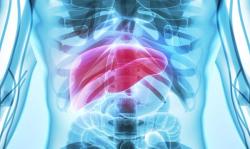Embracing IL-17 A/F Inhibition for Hidradenitis Suppurativa, Dermatologic Conditions - Episode 2
Understanding, Leveraging IL-17 A/F Inhibition with Bimekizumab in HS
Expert dermatologists discuss the role of IL-17 A/F inhibition in the management of hidradenitis suppurativa.
In the second of this 5-part video series, delve into the unique mechanism of action of bimekizumab, which inhibits both IL-17A and IL-17F, and discuss how this dual inhibition may compare to other biologic therapies targeting single inflammatory pathways in hidradenitis suppurativa (HS). The conversation highlights the complexity of HS pathogenesis and the evolving understanding of its immunologic drivers.
Porter frames the discussion by addressing the unclear contributions of IL-17A, IL-17F, and TNF-alpha in HS. She notes that while IL-17A and TNF-alpha inhibitors have shown efficacy in some patients, there is variability in response, leaving an unmet need for therapies targeting broader inflammatory pathways. She points out that patients who fail monotherapy targeting IL-17A may benefit from dual inhibition with bimekizumab, though real-world data will be crucial in determining its relative advantage.
Cotton underscores the potential of dual inhibition, comparing bimekizumab with another IL-17A/F inhibitor, sonelokimab, currently in development. She highlights the promising phase 2 data for sonelokimab, which achieved the highest efficacy endpoint to date in HS trials, with about 50% of patients reaching HiSCR75. According to Cotton, this benchmark raises hopes for greater therapeutic success in a disease where response rates have lagged behind those seen in psoriasis or atopic dermatitis.
Relevant disclosures for Porter include Abbvie, Bristol Myers Squibb, Janssen, Eli Lilly, Novartis, Pfizer, UCB, Trifecta Clinical, Incyte, and Anaptys Bio. Relevant disclosures for Cotton include Leo Pharma, Novartis, Avita Medical, and others.



